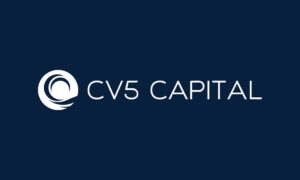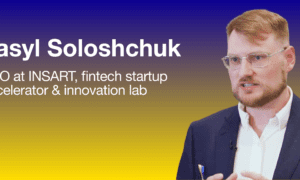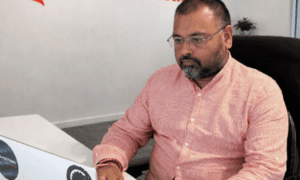Unconventional Ways Startups Boost Efficiency: Founders Share Advice
Startup founders are constantly seeking innovative ways to boost efficiency and drive growth. This article presents unconventional strategies shared by experienced entrepreneurs who have successfully optimized their operations. From leveraging white-label solutions to implementing no-meeting mornings, these expert insights offer fresh perspectives on enhancing productivity in the startup world.
- Leverage White-Label Solutions for Efficiency
- Operationalize Hiring with Competency Framework
- Replace Standups with Asynchronous Video Updates
- Implement No-Meeting Mornings for Focused Work
- Practice Ruthless Client Selectivity
- Embrace Remote-First Model with Flexible Workforce
- Utilize AI-Powered Sales Prioritization
- Integrate Asynchronous Systems Across Teams
- Replace Status Meetings with Written Narratives
- Create Open Spaces for Spontaneous Collaboration
- Consolidate Operations into Single Platform
- Transform Podcast Interviews into Content Engine
- Align Incentives with Performance-Based Compensation
- Conduct Daily Fifteen-Minute Department Huddles
- Build Team of Senior Professionals
- Implement Weekly Vision Ritual
- Schedule Monthly No-Meeting Weeks
- Eliminate Job Titles for Flexibility
Leverage White-Label Solutions for Efficiency
When we were building my company, we realized pretty quickly that trying to handle everything ourselves was slowing us down. So instead of creating our own payment system from scratch, we decided to plug in a white-label solution that could take care of payments and automation for us. That one move helped us handle over five times more transactions without hiring more people. It also gave our team time back to focus on what really matters, like building the product and supporting our customers.
If you’re running a startup, my advice is simple: Don’t try to do everything on your own if there’s already a great solution out there. Find tools or partners that can take care of the repetitive stuff so your team can focus on growth. Look at what’s draining your time and ask yourself if someone else can do it better. Chances are, the answer is yes.
David Grossman, Founder & Chief Growth Officer, Lessn
Operationalize Hiring with Competency Framework
One unconventional method I leaned into was treating hiring itself as a core operational system—not just an HR function.
Very early on, I realized that every part of our startup’s growth depended on the people we brought in. Like many founders, I was initially tempted to make quick hires based on urgency or instinct. Instead, I made the intentional decision to operationalize hiring through a competency-driven framework right from the start. We embedded clear, role-specific success indicators into our process—not just what people needed to do, but how they needed to operate: their decision-making, adaptability, collaboration, and resilience.
By doing this, we eliminated a lot of downstream inefficiencies—fewer mismatched hires, less backtracking, and more team cohesion. Our managers were aligned from day one on what “good” looked like, which made onboarding faster and performance conversations clearer.
The impact? We scaled more confidently and made far fewer “costly corrections” later. The time invested upfront paid off in compounding operational efficiency—not just in hiring, but in how our teams executed, collaborated, and grew.
My advice to other founders is simple: Build your talent strategy like you would any other critical system. Define the competencies that drive success in your business, and make every hiring and development decision through that lens. It’s not glamorous—but it’s the kind of operational discipline that quietly fuels sustainable growth.
Linda Scorzo, CEO, Hiring Indicators
Replace Standups with Asynchronous Video Updates
To streamline operations, we replaced our traditional weekly standups with short asynchronous video updates. Instead of gathering everyone for a live meeting, each head dev records a brief two to three-minute Loom video at the start of the week. In these videos, they cover three things: what they accomplished last sprint, what they’re focused on next, and what blockers (if any) they’re facing.
Once recorded, they link the video directly to the corresponding task in our project management tool, which is usually tied to a specific feature or pull request.
This change made a significant difference for us. For one, it gave my devs more uninterrupted time to focus. No more pausing deep work for meetings that often went off-topic. It also meant updates were easier to track and reference. Now, if someone needs context on a past decision or why a task stalled, they can just click into the linked video. There’s no more digging through Slack threads or scattered meeting notes.
For new hires or cross-functional teams, this is very helpful as they can go back and forth with the Loom recordings to familiarize themselves if they are still new to the process.
If you’re considering shifting toward async updates, my advice is to make it structured. Keep the format tight and tie each video directly to the task or PR it relates to. That way, updates don’t float around in chat threads. If you’re running a remote or fast-moving team, this is one of the lowest-friction changes that can make your ops feel way more responsive without adding overhead.
Cahyo Subroto, Founder, MrScraper
Implement No-Meeting Mornings for Focused Work
One unique approach that really worked for us was starting a “no internal meetings before noon” rule, especially during product build phases. The idea was straightforward: we reserved the mornings for focused work across engineering, operations, and marketing. Instead of chatting in real-time, we relied on asynchronous updates through Loom videos and Notion dashboards. This made things clearer—if you couldn’t explain something in two paragraphs or a 3-minute video, it likely wasn’t urgent or fully thought out.
At first, some team leads were skeptical, especially those who were used to daily standups. But after just two weeks, we saw a noticeable boost in our key deliverables. We managed to ship an important workflow redesign 10 days early and cut down on the back-and-forth in QA. My tip: treat your time like a budget. If you’re wasting it on low-value syncs, it’s tough to grow. Give a 2-week async sprint a shot and see how it affects your delivery speed and stress levels. The results might surprise you.
Felix Lucian, CEO, Felix Happich Consultancy
Practice Ruthless Client Selectivity
We implemented ruthless client selectivity from day one, turning down work that didn’t align with our core expertise, even when we desperately needed the cash.
This approach sounds counterintuitive for a startup, especially a new agency, but it prevented us from falling into the “we do everything” trap that agencies are notorious for. Instead of becoming generalists scrambling to deliver adequate results across multiple services and sectors, we became exceptional at content marketing and AI integration for our niche audience.
The impact has been transformative. Our efficiency continues to increase because we aren’t constantly learning new disciplines or reinventing processes for vastly different clients and industries. Quality has improved dramatically, leading to better client outcomes and stronger referrals.
Most importantly, it has forced us to develop proprietary methods and deep expertise that are becoming our competitive moat.
My advice to other founders? Define what you do exceptionally well and ruthlessly protect that focus. Yes, you’ll lose short-term revenue, but you’ll build something more valuable: a reputation for excellence in your niche. Your brand positioning strengthens tenfold, and clients pay premium rates because they know you’re the specialist, not just another agency trying to do everything.
Jeremy Rodgers, Founder, Contentifai
Embrace Remote-First Model with Flexible Workforce
I quickly learned that launching a startup meant juggling a thousand moving parts at once. Plentiful offers a variety of wellness offerings, from ebooks to adventures, for businesses and individuals seeking more out of life. Most offerings are virtual and available at various price points, with vetted practitioners from across the world. Like many entrepreneurs, I’m cash-strapped, so I have to get creative in streamlining operations. My solution? I practiced exactly what I preached. I embraced a flexible, remote-first model, prioritizing virtual collaboration to reduce overhead costs and free up my time for growth.
Instead of hiring a traditional full-time team, I built a dynamic workforce—a mix of talented freelancers, outsourced SEO and website builders, and ambitious apprentices from Acadium. This approach allowed me to focus on the bigger picture. Rather than getting bogged down in daily tasks, I have the freedom to network, attend conferences, and scale the business strategically. My meetings are streamlined through Google Meet, creating an efficient workflow without the need for costly office space. Today’s business landscape is evolving rapidly. AI, social media, gig work, and remote employment are redefining how companies operate. Founders must be adaptable, embracing modern hiring strategies to stay ahead. Many new creatives are eager to break into the industry, and building symbiotic relationships with them can be incredibly rewarding.
My advice for other startup founders? Leverage the power of online talent platforms like Acadium’s Apprenticeship Program, Upwork, Fiverr, and other freelancer marketplaces. These resources give access to high-quality work without breaking the budget. And don’t underestimate the impact of user-generated content (UGC); real voices and authentic engagement can elevate brand presence in ways traditional marketing can’t. I believe startups thrive when they prioritize efficiency without compromising vision. With the right approach, founders can build something meaningful while keeping operations lean and scalable.
Heinz Waelchli, Founder, Plentiful
Utilize AI-Powered Sales Prioritization
One unconventional move that transformed our operations was abandoning volume-based lead generation and guesswork in favor of AI-powered prioritization. We didn’t automate the entire sales process; instead, we empowered seasoned representatives with deep insights so they could target the right prospects with ICP-specific messaging across calls, LinkedIn, and email, in perfect synchronization.
The impact? We stopped chasing vanity metrics like cost per lead or email opens and focused on leads that actually convert. Our representatives engage more intelligently, not harder. Cold calling is still king, but it only works when combined with persistent, coordinated outreach. This approach shortened sales cycles, boosted conversion rates, and kept our remote team accountable without micromanaging.
My advice to founders is that outbound marketing only works when it’s strategic and relentless. Don’t hand your pipeline to junior outsourced teams. Invest in experienced sales professionals supported by data-driven AI, not to replace them, but to amplify their impact. Omnichannel execution is non-negotiable. That’s how you scale smartly, quickly, and with quality.
Vito Vishnepolsky, Founder and Director, Martal Group
Integrate Asynchronous Systems Across Teams
One unconventional method I use to streamline operations is integrating asynchronous systems across teams. Rather than relying on traditional meetings or constant communication, I shifted to a model where tasks and projects are tracked in real-time via asynchronous tools like Airtable or ClickUp. This not only allows my teams to work without time zone limitations, but it also creates clear accountability for each team member’s progress.
The impact? On average, we cut task backlog by 40% and increased throughput by 3x within just 60 days. My advice to founders: embrace asynchronous workflows EARLY. They do require upfront setup and discipline (and maybe a bit of frustration while team members get used to the setup), but they create efficiency and clarity that can scale without burning out your team or forcing constant, unnecessary communications (= fewer meetings!).
Denisse Calderon-Trevizo, Fractional COO
Replace Status Meetings with Written Narratives
We eliminated “status meetings” completely—and replaced them with written narrative updates. Weekly, not daily. Each team member writes one page: not what they did, but what they learned, what blocked them, and what shifted in their thinking.
It sounds simple, but it’s radically different from check-ins. Instead of spending hours aligning over Zoom, we now get clearer insights in 10 minutes of reading. It forces structured thought, reduces noise, and gives everyone time to focus on real work.
The result?
More autonomy, fewer interruptions, and a culture where people think in systems, not tasks.
My advice?
Try one week without meetings. Just one. Replace them with thoughtful writing. You’ll see who’s aligned, who’s thinking, and what actually matters. Most importantly, your team will feel trusted—and that’s the foundation of speed.
Igor Trunov, CEO, Atlantix
Create Open Spaces for Spontaneous Collaboration
One unconventional approach we implemented was to avoid over-structuring processes too early. Instead, we created open spaces that encouraged flexibility and real-time interaction. For example, we utilized Discord with always-open video rooms that functioned as a virtual office. Team members could enter and exit freely, without the need to schedule meetings. This setup facilitated spontaneous conversations and quick collaboration to occur naturally.
This approach helped us move faster, especially in the early stages. People didn’t have to wait for formal check-ins or approvals—they could connect instantly, align, and keep things moving. It reduced unnecessary coordination and accelerated execution.
My advice to other founders is: early on, prioritize flow over formality. Build systems that make it easy for your team to connect and problem-solve on the fly. Structure can always be implemented later, but early velocity depends on creating an environment for fast, organic teamwork.
Santiago Nestares, CoFounder, DualEntry
Consolidate Operations into Single Platform
Honestly, we started using Notion as our entire operating system instead of juggling 15 different tools. It sounds basic, but hear me out.
Instead of having Slack for communications, Trello for projects, Google Sheets for tracking, a separate CRM, and a separate knowledge base, we built everything in Notion. One workspace handles project management, client communications, financial tracking, team wikis, meeting notes, and more.
The impact was huge—no more context switching between apps, everything’s searchable in one place, and onboarding new team members went from days to literally hours since all our processes and information live in the same spot.
We started doing this when we were about 4 people and thought we’d outgrow it quickly, but we’re at 15+ now and it still works great. It saves us probably $200-300 per month on various SaaS subscriptions too.
My main advice if you try this: spend the upfront time building proper templates and workflows. Don’t just dump everything in there randomly, or it becomes a mess fast. Also, make sure everyone on the team actually commits to using it; otherwise, you end up with information scattered again.
I’m not saying it’s perfect for every company, but for early-stage startups who need to move fast and keep costs down, consolidating tools can be way more valuable than having the “best” tool for each specific task.
Haydn Price, Founder, V1CE
Transform Podcast Interviews into Content Engine
I suppose the unconventional approach we’ve taken is to treat our podcast interviews as a data mine, not just content. After each guest episode, we run the full transcript through an internal content automation pipeline built in N8N. This system automatically tags recurring themes, identifies bold opinions, and pulls quotes for EDMs and LinkedIn thought leadership.
We then auto-generate one LinkedIn-ready insight post, one press-style blog with SEO hooks, and an EDM segment to feed into our nurture tracks. This has turned a single podcast shoot into a three-week drip of content across platforms, all grounded in the actual voice of our industry. We also run waitlists to get early access to the interviews, so our database is growing with every drop.
The impact?
We’ve stopped scrambling to create content from scratch. We’re simply mining what already happened and making it feel like an engine.
Advice to other founders?
Despite what all the trends say, content is a volume game. Automate how you capture what’s already being said in your brand world, and automate it just enough that the content is at 80%. Then hire someone to take it from 80 to 100% and post it.
Voila! You’ve just built a content engine.
Brayden Beavis, Founder, Your Salon Support
Align Incentives with Performance-Based Compensation
One unconventional—but highly effective—method we use is hiring advertisers as sales representatives. Instead of a traditional flat salary model, we offer a smaller base pay and tie their compensation directly to a performance scorecard based on lead generation results for our clients.
This shift created two major wins:
1. It aligned incentives—our advertisers are now just as invested in outcomes as our clients are.
2. It created a culture of ownership—they don’t just “run ads,” they build campaigns with real business goals in mind.
The impact on efficiency was huge. We stopped wasting time on vanity metrics and started focusing on qualified leads, cost-per-acquisition, and long-term client ROI. It also helped us attract entrepreneurial-minded team members who thrive in performance-based environments.
My advice to other founders: If your business model depends on client outcomes, build your team structure to reflect that. You’ll get more focus, better results, and fewer layers of management trying to push accountability downstream.
Zachary Colman, Owner // TEDx Speaker, Creatitive
Conduct Daily Fifteen-Minute Department Huddles
For every working day, I wrap it up with a fifteen-minute huddle with each department, not a single minute more than that. And yes, I literally pop into every session myself. We keep it super simple: what we knocked out today, what’s on deck for tomorrow, and any roadblocks slowing us down. No slides, no long monologues, just a quick check-in before everyone signs off.
Because it’s at day’s end, issues stay fresh. If a developer ran into a bug or our marketing copy didn’t hit the mark, we catch it right away instead of letting it fester. That means we head into the next morning already aligned, rather than stumbling over surprises.
Teams appreciate knowing I’m in the weeds with them, which boosts morale and keeps priorities crystal clear. No bugging anyone during the day because micromanagement pushes you and your team apart. And knowing they’ll share progress every evening forces everyone to focus on real results instead of spinning their wheels.
Throughout my career and while building startups, this has been my go-to method. My advice is simple: keep the meeting to three points, honor the time limit, and don’t let the meeting slide past fifteen minutes. Make it a habit. You’ll wrap up each day with momentum and wake up confident that tomorrow’s work is already mapped out.
Nick Chandi, CEO & Co-Founder, Forwardly
Build Team of Senior Professionals
One unconventional decision I made was to build a team composed solely of senior professionals, even if that meant staying smaller for longer. Instead of hiring layers of analysts and coordinators, I focused on individuals who could think strategically and execute without supervision. This approach drastically reduced the need for rework, meetings, and micro-management.
This setup provided us with greater speed and consistency. Everyone speaks the same language, owns their area, and can contribute across functions when needed. The tradeoff in higher individual salaries is offset by the sheer efficiency and clarity we gain. For other founders, I’d advise: don’t be afraid to stay lean if your team is strong enough to move as a unit.
Renato Ferreira, Founder & Advisor, Insight Sales
Implement Weekly Vision Ritual
As a founder, especially in the early days, you need to constantly fuel the spark and excitement of a team that believes in your dream because of you. So I implemented what I call a “Vision Ritual.”
Every Monday, before diving into KPIs or sprint tasks, I shared one bold, vivid story of what success looks like once we’ve made it. Not a vague mission statement but a clear moment: the headline, the impact, the lives changed. Only 5 minutes, but it re-centered everyone on why we’re here.
The effect? Morale stays high even in uncertainty. The team starts owning the vision, not just the tasks. And when people feel like they’re building a legacy, not just a product, they bring a different kind of energy.
Your team needs inspiration weekly. Early-stage momentum doesn’t come from product updates. It comes from belief, clarity, and the conviction that they’re building something bigger than themselves with someone who sees it vividly.
Cristina Imre, CSGO ARBOai & Founder Tech Leadership Lab, ARBOai
Schedule Monthly No-Meeting Weeks
We started doing “no-meeting weeks” once a month, full weeks where the entire team goes into execution mode with zero internal calls unless it’s critical.
Sounds extreme, but here’s why it works: most meetings aren’t decisions, they’re distractions disguised as collaboration. When we cut them out temporarily, productivity shot up, and the team had space to actually finish the big things we usually kept deferring.
Our dev team shipped two weeks’ worth of work in five days. Our marketing team launched a new funnel end-to-end. And we started seeing a new rhythm, people weren’t waiting for permission, they were owning outcomes.
If you’re a founder stuck in endless Zoom cycles, I highly recommend it. Start with just 3 days. Watch how fast the right people rise and how many “urgent” things solve themselves when people are empowered to think, not just talk.
Michael Ripia, Founder & Managing Director, Halo Marketing
Eliminate Job Titles for Flexibility
One unconventional method I used to streamline my startup’s operations was eliminating job titles for the first six months. Rather than designating positions such as “Marketing Manager” or “Product Lead,” we simply focused on skills and duties. Everyone, including myself, had a list of outputs they were responsible for—no titles, no hierarchy. This approach fostered a culture of ownership and flexibility, particularly during those crucial initial months.
Initially, it was chaotic. Some team members were uneasy without the traditional framework. However, eventually, collaboration improved significantly. Engineers proposed marketing concepts, designers contributed product features, and no one uttered, “That’s not my job.” This approach dissolved silos before they had the chance to form and enabled us to become more efficient with fewer handoffs.
Efficiency increased by almost 30% in our first two quarters, and morale was high because individuals felt appreciated for their contributions, not their titles.
My advice to founders: don’t be afraid to shake things up. Early-stage startups thrive or fail based on flexibility. If you believe in your team and communicate openly, outside-the-box strategies like this can put serious pressure on the competition.
Janelle Warner, Co-director, Born Social
Related Articles
- 5 Best Practices for Tech Startups – TechBullion
- Driving Efficiency in Industrial Automation: How Startups Are Shaping
- Low Volume Manufacturing: How Does It Empower Startups to Boost the

































